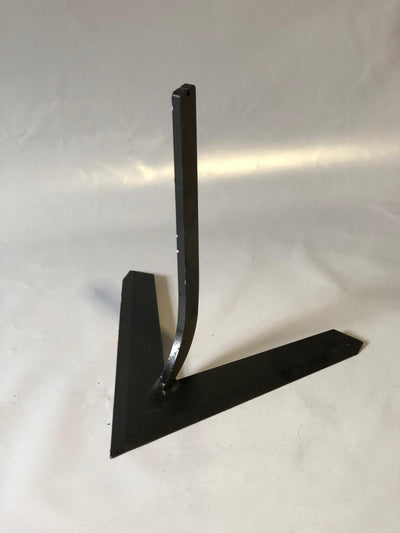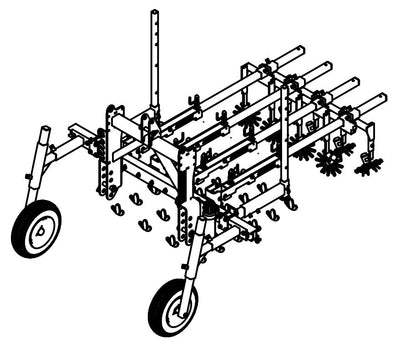Protect the crop while hoeing with Steketee
During hoeing, the weeds in a crop row are cut off at the stem and thus kept away from the crop. Displacing (or striking) sand is inevitable in this process. The weeds have been controlled, but the moving sand can damage the crop. To prevent this, Steketee has several solutions in its range. In this article we would like to explain which products you can buy in our webshop to protect the crop during hoeing.

Different types of crop protection from Steketee
What kind of protection you need depends on the type of element you use. In our webshop we have different options:
We would like to explain per product for which type of element it is suitable and provide more information about the characteristics of the Steketee product.
Steketee adjustable discs
Steketee has both adjustable discs for the basic element and for the combi element.
Adjustable disc for the basic element
The suspension of these discs is located at the front of the fixed part of the element. The disc can move independently of the blade. You can therefore easily place the disc at the correct distance from the blade and thus adjust it to the length of the back. In the webshop you can buy the adjustable disc for the left or right side of the machine:
- Adjustable protective disc 305 mm Basic left complete
- Adjustable protective disc 305 mm Basic right complete
The disc can be attached to the element by means of two types of disc holders:
- Hard disk holder : You use this when you do not need to adjust the position of the disk.
- Adjustable disc holder: You use this when you want to adjust the disc both horizontally and vertically.
Both disc holders are mounted on the element in the same way. By means of a bolt you can adjust the distance between the hoe and the discs as desired. This way you ensure that the blade and the disc are at the right distance from each other.
Adjustable disc for both the combi and the basic element
This protective disc from Steketee has a diameter of 220mm and is adjustable on a round shaft. This means that you can still set the disc after confirmation. Furthermore, the disc is at the front and the knife ( Steketee L-knife ) at the back of the combination. The disc loosens the soil, so that the blade can then cut the weeds at the root with precision. This disc is very suitable for small plants, such as onions.
Steketee serrated discs
These serrated discs are used to protect large crops such as maize. The discs are suitable for the combination element and are available with different sliding part widths.
Depending on the distance of the crop row, you choose the corresponding width:
The suspension of the disc is flexible, so you can easily put the disc in both working position and transport position. When moving - when you are not hoeing - the disc does not get in the way of driving. Thanks to the knurling, the drive of the disc is smooth and effective.
Steketee hoe discs
The Steketee hoeing discs are extremely suitable for ridge cultivation. With a hoeing disc you can very lightly slide the soil off the ridge and with the stainless steel ridger you can rebuild the ridge. So it is a different kind of protection than the one we discussed above. The hoeing effect keeps weeds away from the back and thus protects the crop. These hoe discs only fit the Steketee combi elements.
The hoeing discs are available in two variants:
Steketee protection plates
Finally, we have the Steketee protection plates. These are exclusively intended for the combi element. This robust protective plate protects the crop against clods and is therefore extremely suitable for heavier soils.
The protective plates are available in two variants:
Finally
Steketee offers several solutions for protecting the crop during hoeing. For both the combi and basic element of Steketee. Are you not quite sure what the best solution is for your type of crop and soil? Then feel free to contact us! We are happy to provide you with advice without obligation.
Steketee protective discs explained in a video
Are you curious what the different parts look like? Our Steketee specialist, Henry Meijering explains it in a video:




